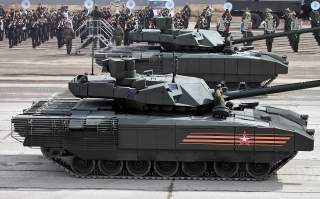How A $125 Million Baltic Guerrilla Force Could Stop Russia: Report
The Baltic States don’t have a chance in a conventional war with Russia. Estonia, Latvia and Lithuania could be conquered in less than three days, according to some estimates. But a guerrilla army just might make the Baltics so indigestible as to deter Moscow from invading, according to a study by U.S. thinktank RAND Corp.
The Baltic States don’t have a chance in a conventional war with Russia. Estonia, Latvia and Lithuania could be conquered in less than three days, according to some estimates.
But a guerrilla army just might make the Baltics so indigestible as to deter Moscow from invading, according to a study by U.S. thinktank RAND Corp.
The price tag? $125 million to create 1,000 combat and non-violent action cells, as part of a dual nation-in-arms strategy.
One part would be Total Defense, involving all of civil society in non-violent resistance and homeland security. The other would comprise Unconventional Warfare, which relies on special operations and guerrilla tactics. The result is a broad-spectrum resistance ranging from armed attacks by special forces and cut-off regular army troops turned guerrilla, to spreading propaganda leaflets and tweeting on social media.
The result is a sort of “people’s war” designed to wear down an adversary, or at least threaten to wear him down. “TD and UW can enhance deterrence and, if deterrence should fail, can deny an adversary an easy victory by making an occupation costlier to the invading forces,” argue the RAND researchers. “In particular, the Baltic states have a significant history of resistance activities against invading and occupying forces during and after World War II, and preparing for resistance is part of the defense strategies of all Baltic states.”
But the Baltic Resistance would enjoy tools that the French Resistance of 1944 could only have dreamed of. Small drones, anti-tank and anti-aircraft missiles, radios, night scopes and dirt bikes for the “High-End Violent Action Squads.” Vans, megaphones, GoPro cameras, computers and printers for the “Non-Violent Action Cells.”
Interestingly, RAND found that the most valuable weapons in a Total Defense/Unconventional Warfare strategy were not anti-tank missiles or land mines, but the cheaper, low-tech stuff of warfare: night-vision devices, secure mobile communications, computers, video cameras, all-terrain mobility vehicles, and small arms.
That’s important, because the little Baltic States have little defense budgets around $600 million to $800 million each. “A robust technology initiative to equip resistance cells in all three Baltic states would require approximately $125 million in initial equipping cost, plus training, operations, and maintenance funding,” the study said. “Such an initiative could be supported by national defense budgets implemented over several years, and is also scalable.”
Those concerned about the rise of far-right nationalism in Eastern Europe might have qualms about some of these plans. For example, the study examined one scenario in which Russian LGM (Little Green Men, named after the undercover Russian commandos that seized the Crimea from Ukraine in 2014) fomented insurrection. This scenario also included the Baltic governments seeking “the assistance of trained volunteers from the Women’s Home Defense League and other loyal citizens to report LGM activities,” which would also seem to be an invitation for political and ethnic denunciations in nations that have significant Russian minorities.
Still, given the disparity in strength between the Baltic States and Russia, a guerrilla warfare capability may be the most realistic option. Yet even there, the RAND study adds some important caveats. The flat, open Baltic terrain offers little cover for insurgents. And what could the Baltics hope to achieve without outside help?
“TD/UW efforts alone would be insufficient to defend against a full-scale Russian military attack in the Baltic states,” RAND concluded. “In light of the Baltic experience after World War II—when resistance activities in all three countries collapsed once it became clear that the West was not going to liberate them from Soviet occupation—TD/UW efforts need to be tied to a conventional campaign, including a NATO counterattack within weeks or months (not years or decades), to be viable contributors to defense and deterrence.”
Michael Peck is a contributing writer for the National Interest. He can be found on Twitter and Facebook.
Image: Creative Commons.

